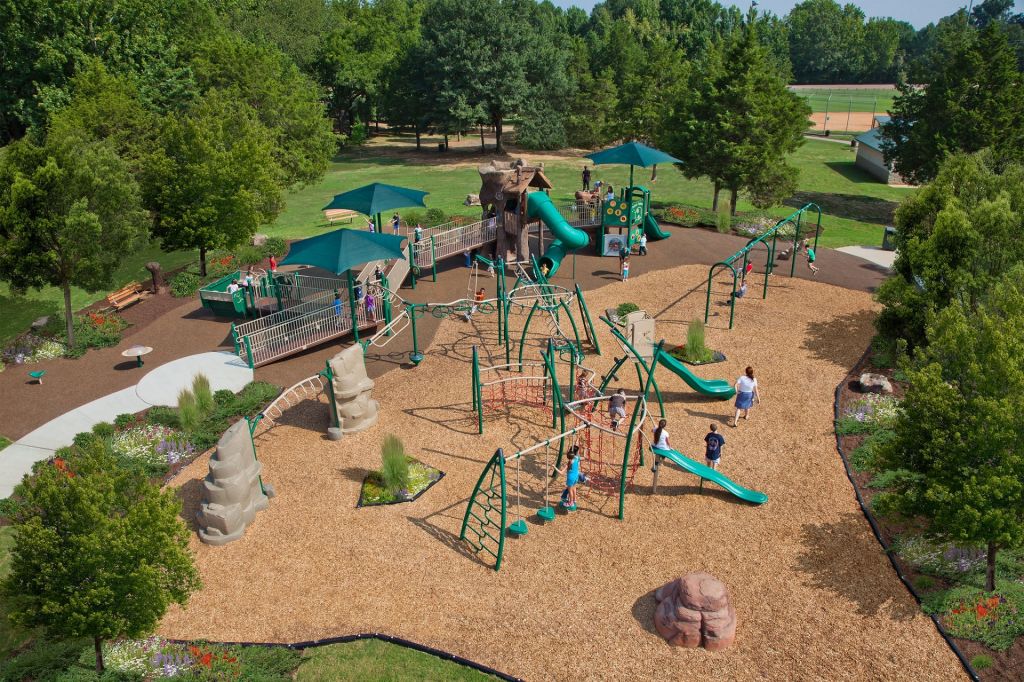The construction of a playground from the starting point is a major task. For daycares and school it could be an enormous investment from a financial standpoint. While the idea of children having fun outdoors might ease some of the cost, it’s not going to lower the overall cost.
There are ways to increase the value of initial investments so that the playground is in use for a long time. Here are three tips for daycares and schools that can help them make the most of their investment for the long-term impact.
Table of Contents
1. Know Your Needs
For any construction project, prior to you start digging it is essential to have a clear schedule in place. Understanding the needs of the daycare or school will ensure that you’re creating an area of play that kids will enjoy for many years to follow.
In the case of playgrounds, you’ll need to think about the ages of the kids who use the playground. In elementary schools, kids must be involved across many different modes and challenges. The first-grade student who is shy needs to be entertained as a boisterous fifth grader. Different kinds of playground equipment must be bought and constructed to allow all children in this school, to get a challenge but enjoying themselves.
Daycares typically offer a smaller age range, which means they are able to adjust their equipment to meet their individual requirements. For toddlers younger than 3 the bucket swings, smaller slides, sensory activities, and sandboxes are good alternatives.
Also, you’ll have to consider the space you have and how large you’d like the playing area. If you’re planning that the daycare’s size will increase over time, only one slide will not suffice. Perhaps you just have enough money to fund the first phase of your project. In either case, you should consider the space you have available and work out how you can benefit from it in the event that you be tempted to expand in the future.
2. Include Multiple Types of Play
Another method of maximising the investment in outdoor play is to create with different types of play in your mind. It is not the case for every child to be completely captivated by a swing set. Some kids might prefer climbing on ropes or ride on a merry-goround. Making sure to design for different types of play means that all children or daycare children will be enthusiastic about their outdoor playtime. The last thing a parent or teacher needs to hear from their students is “I’m bored” the moment they go outside for a break!
If you have the space, think about making zones to play in different spaces. A zone for activities can comprise swings, ladders, or monkey bars. Sensory zones can include water-based installations, sandboxes as well as sensory boards. A zone of peace can be beneficial for children who are overwhelmed, and provide them with a moment of peace. A shaded area with benches or a small area could be the perfect solution certain children might require.
Multiple play areas can be crucial from an safety standpoint and also from a developmental standpoint. Schools with larger sizes should have separate zones for the appropriate age class. This will allow teachers to observe their whole class. The different zones can help in inclusion, making sure that children of all abilities feel that they are able to engage in a particular activity.
3. Think Eco-Friendly
Daycares and schools that are planning to construct a playground for years of fun are advised to consider using environmentally friendly materials. The playgrounds are designed to limit environmental impacts while maximising long-term usage. There are many possibilities to integrate environmentally friendly materials into your playground.
Before you start, consider the material that will be used for surfacing. Instead of using plastic-based or rubber products, think about engineered pea gravel, wood fiber or wood chips. You can also use recycled mulch made of rubber. These products are long-lasting and have a less environmental impact.
Then, consider if there’s an opportunity to incorporate natural elements into your designs. Instead of removing trees to create play areas, could you figure out a way to use the trees? Is there a small area that could be ideal for a garden area with tables and picnic tables? These types of items could be great teaching opportunities for daycares and schools. Children are able to be enlisted to plant various items in spring and observe what they do throughout the year.
One easy way to make your home an environmentally friendly space is to put up recycle and compost bins. Bins clearly marked will assist in educating children about what goes into the trash and is recyclable or used to plant. This is a very cost-effective way to maintain your playground for many years to be.
4. Maintain and Inspect Regularly
In terms of maintenance, in order in order for a play area to enjoy the most use it can get and last as long as it can, it should be maintained and regularly checked. Children can do quite a number on a play structure. From a safety perspective it’s essential for equipment to be examined for potential dangers. Screws that are loose need to be tightened, and sharp edges must be fixed in order to avoid possible accidents.
Other maintenance such as trimming the plants, removing all debris, as well as filling in and leveling the surface and resurfacing, must be done frequently. For schools with the PTA is a good option to begin the playground team and also involve parents in the care and maintenance of the playground. Daycares could also be able to recruit certain parents or guardians who would like to take a break on weekends gardening or brushing leaves.
These social activities don’t only involve free labor They also help create the feeling of belonging. Parents of the school can get together and have a chat about common interests, and parents of daycare and nannies are able to share stories of their children’s lives and advice. Additionally, community members who are involved are proud of their efforts and will be eager to keep keeping the playground for the future.



